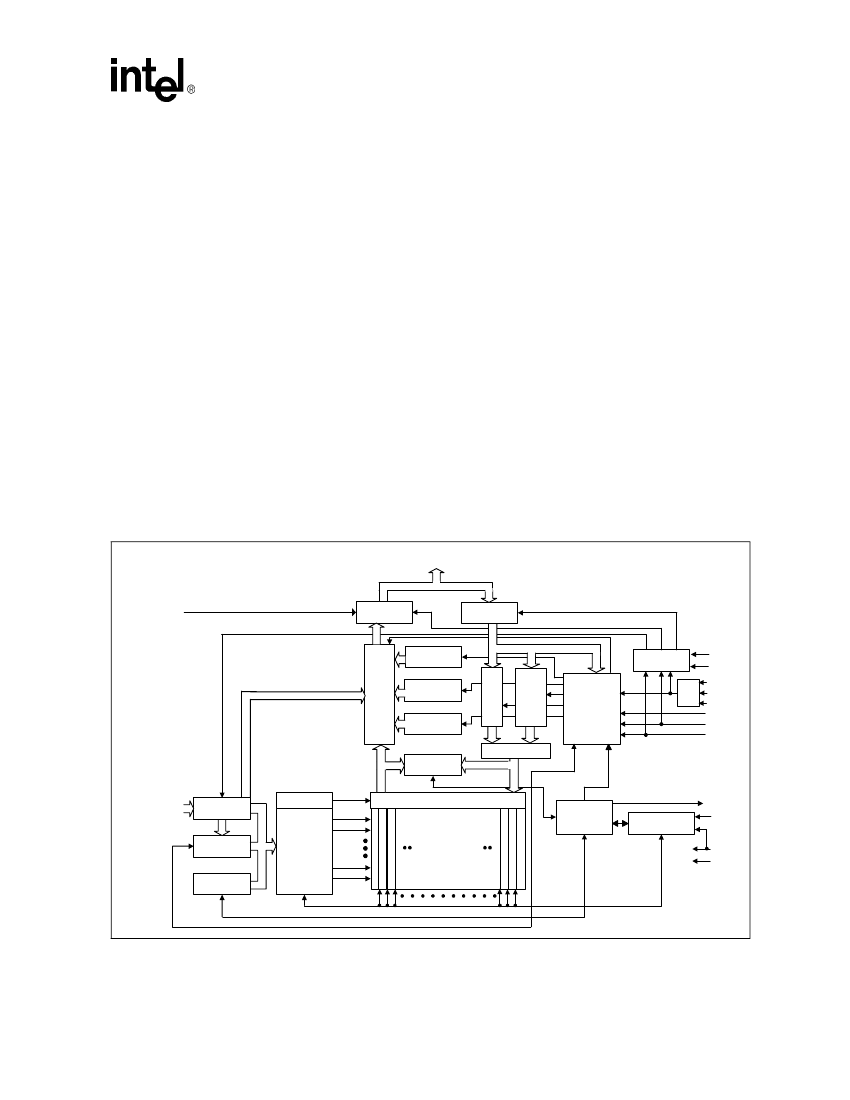256-Mbit J3 (x8/x16)
suspended (and programming is inactive), program is suspended, or the device is in reset/power-
down mode. Additionally, the configuration command allows the STS signal to be configured to
pulse on completion of programming and/or block erases.
Three CE signals are used to enable and disable the device. A unique CE logic design (see
Table 13, 鈥淐hip Enable Truth Table鈥?on page 33)
reduces decoder logic typically required for
multi-chip designs. External logic is not required when designing a single chip, a dual chip, or a 4-
chip miniature card or SIMM module.
The BYTE# signal allows either x8 or x16 read/writes to the device. BYTE#-low selects 8-bit
mode; address A0 selects between the low byte and high byte. BYTE#-high enables 16-bit
operation; address A1 becomes the lowest order address and address A0 is not used (don鈥檛 care). A
device block diagram is shown in Figure 4 on page 14.
When the device is disabled (see
Table 13 on page 33),
with CEx at V
IH
and RP# at V
IH
, the
standby mode is enabled. When RP# is at V
IL
, a further power-down mode is enabled which
minimizes power consumption and provides write protection during reset. A reset time (t
PHQV
) is
required from RP# going high until data outputs are valid. Likewise, the device has a wake time
(t
PHWL
) from RP#-high until writes to the CUI are recognized. With RP# at V
IL
, the WSM is reset
and the Status Register is cleared.
2.1
Block Diagram
Figure 1. 3 Volt Intel StrataFlash
庐
Memory Block Diagram
D[15:0]
VCCQ
Output
Buffer
Input Buffer
Query
Output
Latch/Multiplexer
Write Buffer
Identifier
Register
Status
Register
I/O Logic
Data
Register
CE
Logic
VCC
BYTE#
CE0
CE1
CE2
WE#
OE#
RP#
Command
User
Interface
A[2:0]
Multiplexer
Data
Comparator
Y-Decoder
A[MAX:MIN]
Input Buffer
Y-Gating
32-Mbit: Thirty-two
64-Mbit: Sixty-four
128-Mbit: One-hundred
twenty-eight
128-Kbyte Blocks
Write State
Machine
Program/Erase
Voltage Switch
STS
VPEN
Address
Latch
Address
Counter
X-Decoder
VCC
GND
Datasheet
9
